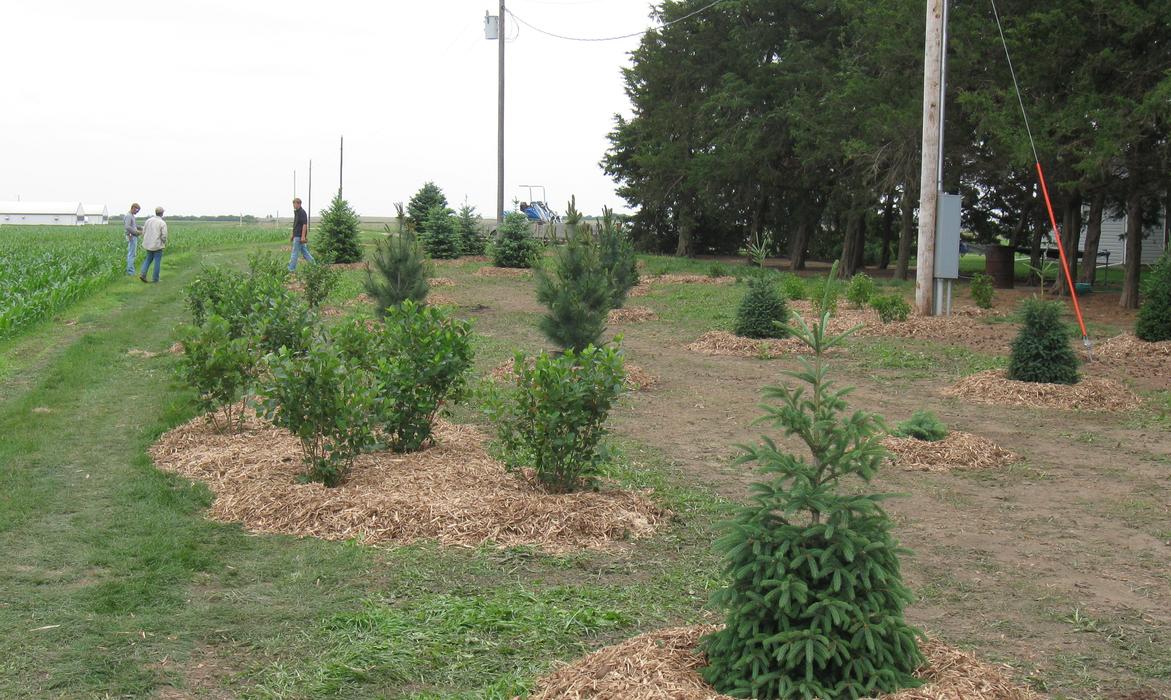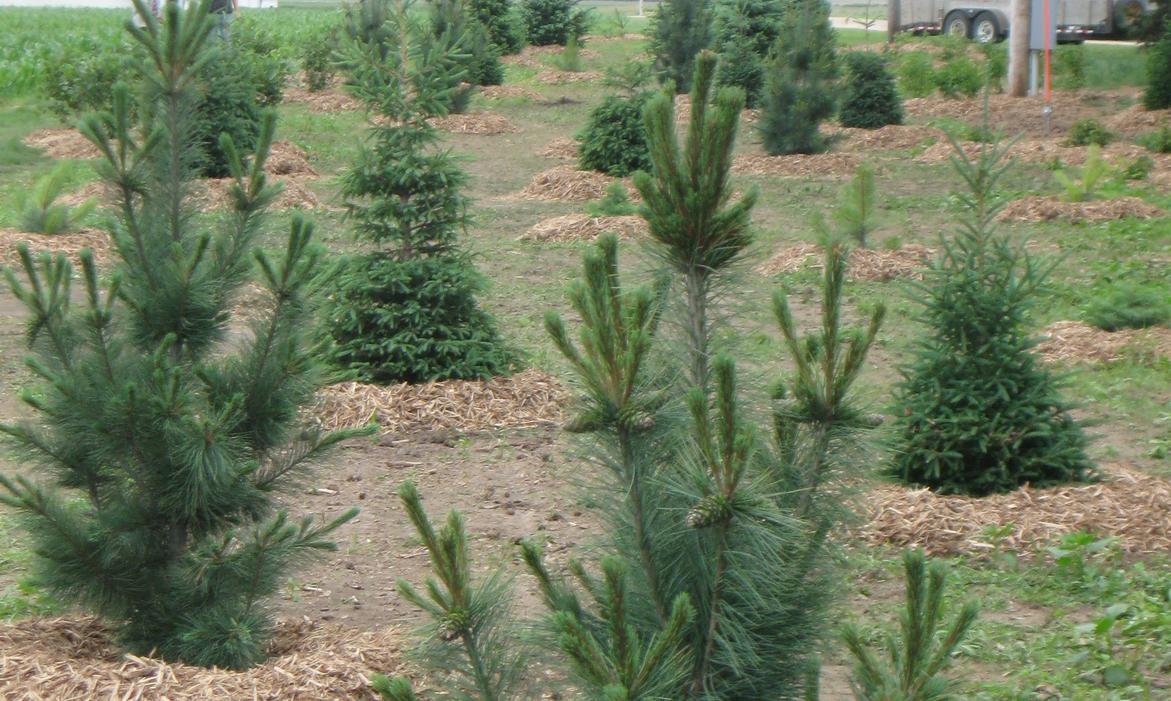Windbreak

Why are they essential? What do I do with an existing one?
How does a windbreak work?
Windbreaks are rows of trees, evergreen or deciduous, and potentially shrubs, used to protect and reduce the force of wind/snow. They can also help with soil erosion, increase yields in crops, and protect livestock. They also help shield buildings, roads, and homes from the potential wrath of nature.
Design of a windbreak
Trees can be planted in straight rows or as we prefer, the more natural design, arranging trees in a staggered, irregular pattern. The trees can still be planted at the 15 - 20' spacing, but if you lose a tree it's less obvious, as is their growing at differnt rates than when planted in straight lines.
Groupings are also a good idea when it comes to your design, whether it be groupings of shrubs worked in with the evergreens, or simply different varieties of evergreens intermixed throughout the planting. Doing this can make a dull windbreak more effective, very attractive and give it that natural appearance associated with the edge of a forest.
What varieties should I use?
The biggest problem with older, existing windbreaks today is the lack of diversity. Take the Scotch Pine for example, fifty or more years ago the Scotch Pine was the "go-to" evergreen. It was fast growing, drought tolerant, and at the time pretty disease resistant. Now, being susceptible to Pine Wilt, most farmsteads lined with these trees are one match away from lighting up.
As humans, we live and we learn, so now we know DIVERSITY IS KEY.
One variety is never the answer to a planting because there is no single, perfect variety for a windbreak, they all have their strengths and possible weaknesses, as does every living thing. Keeping that in mind, here are a few varieties that presently do very well in a Nebraska windbreak setting.
- Concolor Fir - soft needles, blue/green color, full from the ground up, drought tolerant
- Domingo Pine - blue/green color, fast growing, disease resistant
- Eastern Red Cedar (I know, but works in a tough setting) - fast growing, native, well adapted to our harsh weather
- Bur Oak - native oak, very hardy, drought tolerant
How do I update my existing windbreak?
Most people think that when they have to renovate their existing windbreak they have to tear it all out and start from scratch. However, keeping older trees, if feasible, can be very beneficial to any new ones you might incorporate, just stagger them in and around the older trees. They will serve as great protection as the younger trees get established and may even aid them in growing faster. As those trees mature and get larger, you can slowly remove the older, less vigourous trees.
